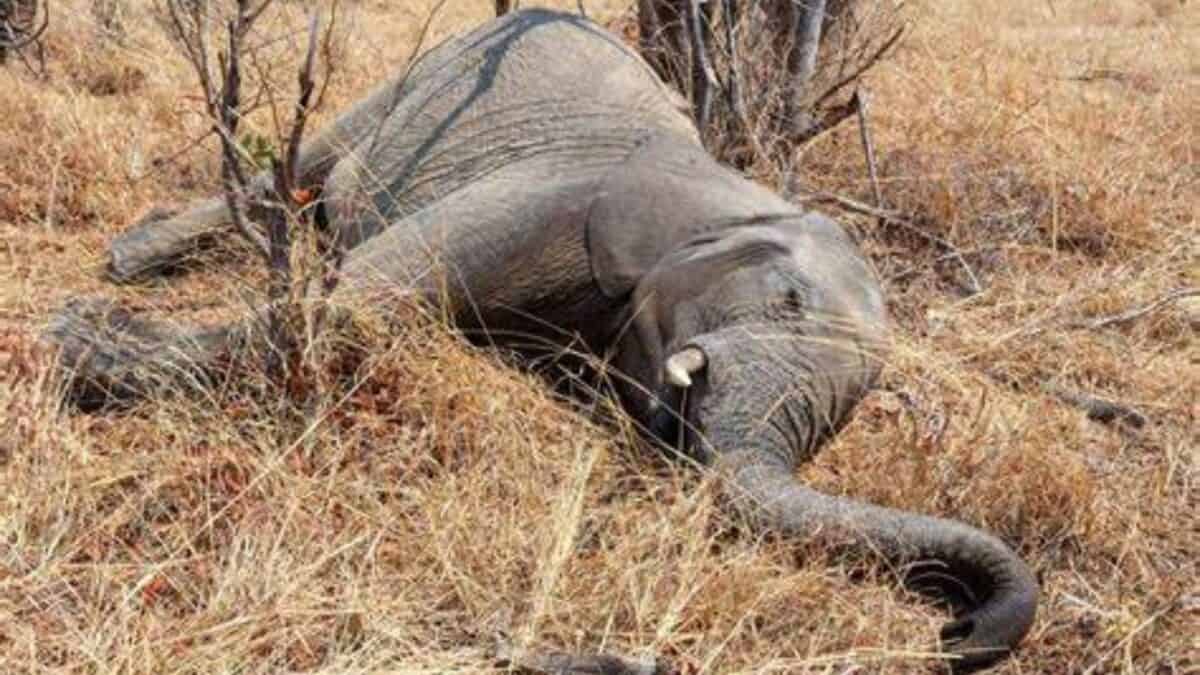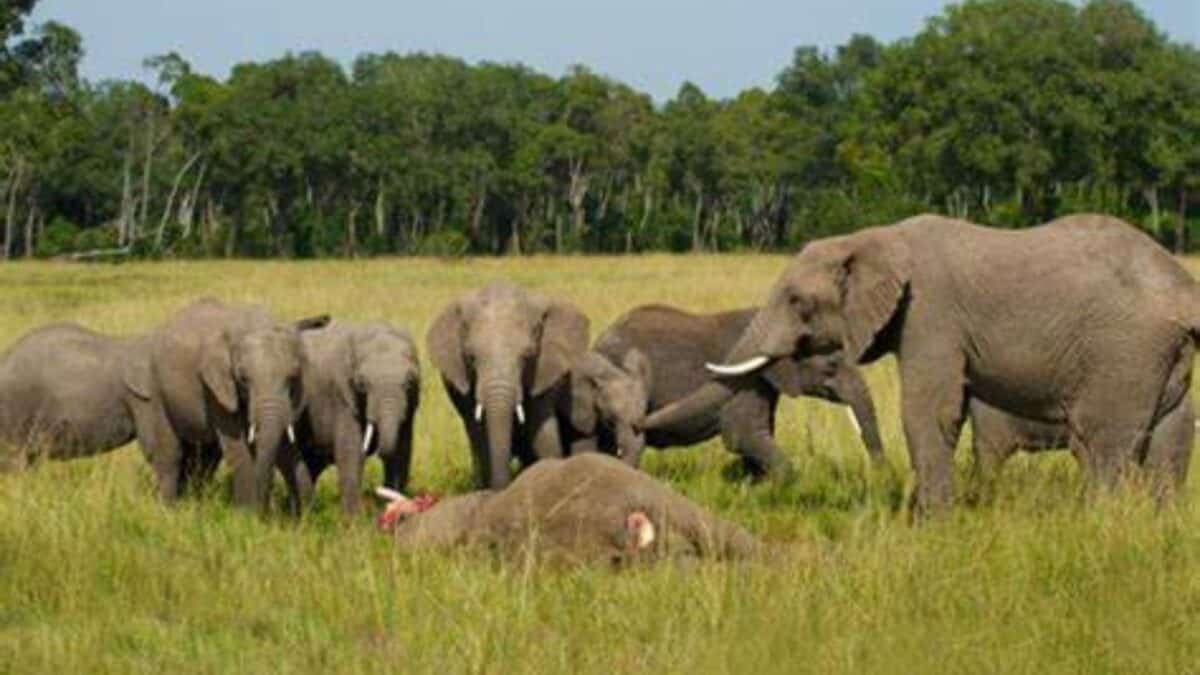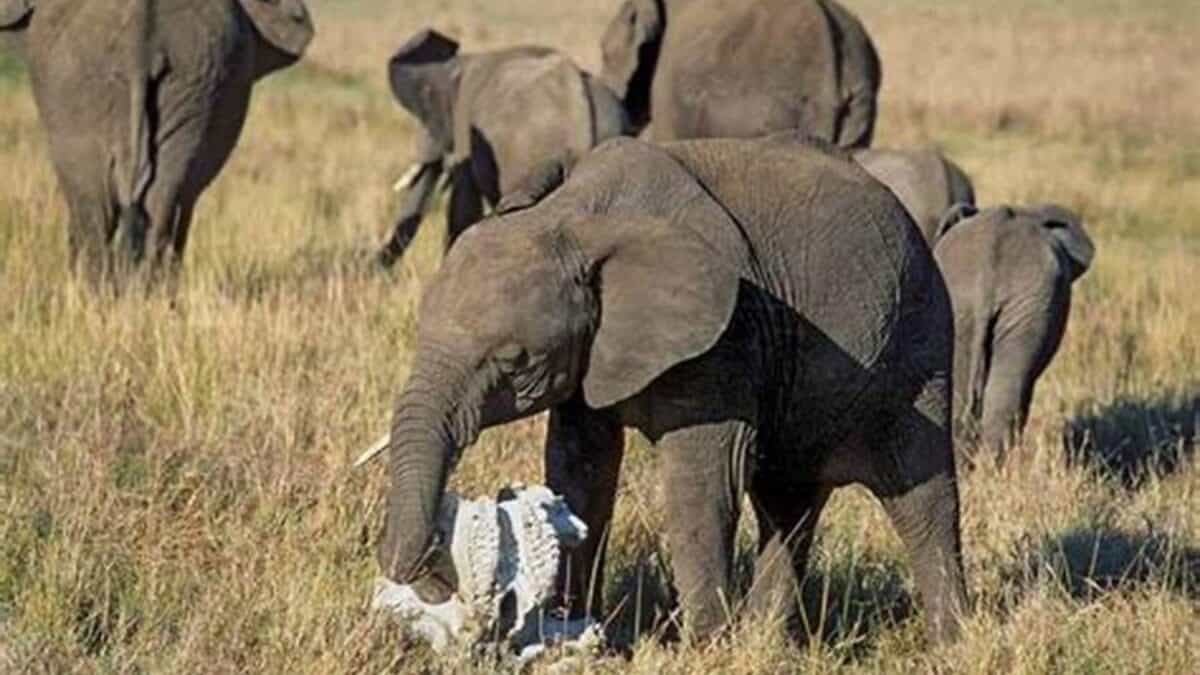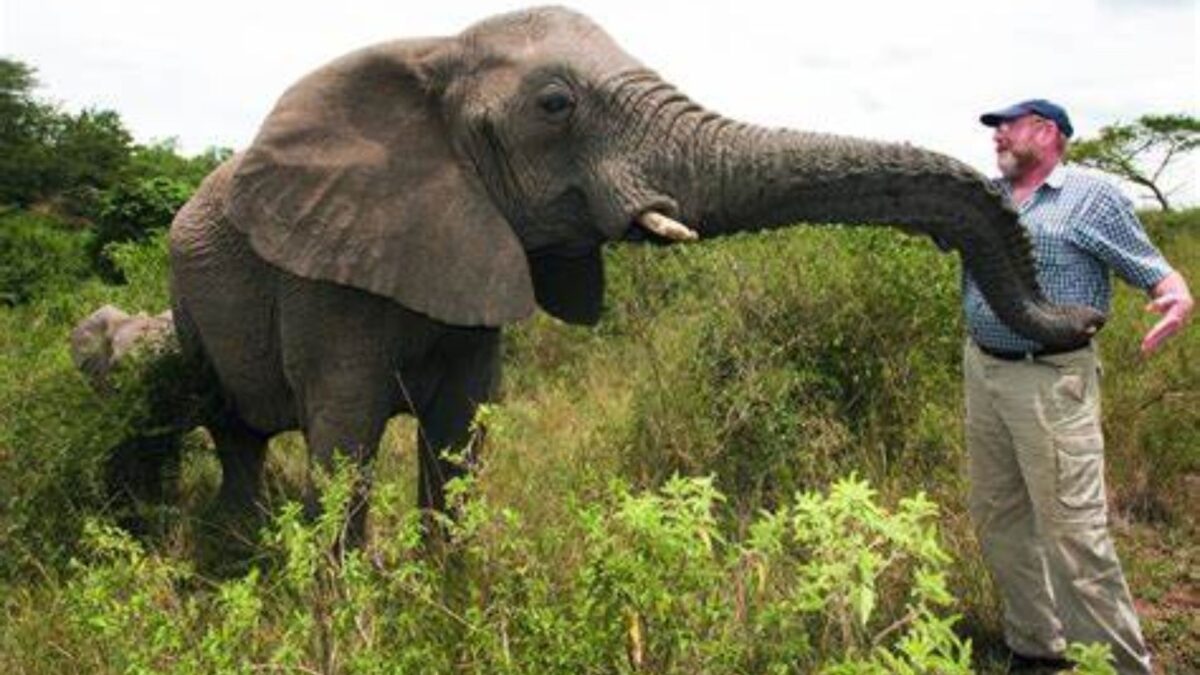In the animal kingdom, few behaviors are as poignant and emotionally resonant as the way elephants respond to death. These magnificent creatures, known for their intelligence and complex social structures, demonstrate profound grief reactions that have fascinated scientists and animal behaviorists for decades. Elephant mourning rituals offer a window into the emotional lives of non-human animals and challenge our understanding of consciousness and emotional awareness in species other than our own. Through careful observation and research, scientists have documented numerous instances of elephants engaging in what can only be described as funeral practices – behaviors that suggest an understanding of mortality and a capacity for grief that rivals our own.
The Emotional Intelligence of Elephants

Elephants possess extraordinarily developed brains with a neocortex similar in structure and complexity to humans. Their brain-to-body mass ratio rivals that of primates, and they demonstrate self-awareness by recognizing themselves in mirrors – a test that most animals fail. This advanced cognitive architecture supports their remarkable emotional intelligence. Elephants form deep bonds that last decades, recognize hundreds of individuals, and maintain complex social networks. This sophisticated neural foundation enables them to experience a range of emotions, including what appears to be grief, making their mourning behaviors not just instinctual responses but potentially conscious expressions of loss. Studies by neuroscientists have identified specialized spindle neurons in elephant brains, previously only found in humans, great apes, and cetaceans, which are associated with empathy, social awareness, and emotional processing.
Recognition of Death

Elephants demonstrate a clear recognition of death that goes beyond momentary curiosity. Research by Dr. Karen McComb of the University of Sussex has shown that elephants can distinguish between elephant bones and those of other species, displaying particular interest in elephant skulls and tusks. When presented with the remains of their own kind, elephants often become quiet and investigate these remains with their trunks and feet in a deliberate manner. They may spend extended periods examining the bones, sometimes carrying smaller bones away with them. This specific interest in the remains of their own species suggests an awareness of death’s significance that few other animals demonstrate. Particularly remarkable is their ability to recognize family members’ remains even years after death, suggesting a form of remembrance that persists long after the physical presence of the deceased has vanished.
Funeral Rituals and Ceremonies

When an elephant dies, surviving herd members often engage in what researchers describe as funeral ceremonies. These rituals frequently begin with the elephants gathering around the deceased, where they stand in silence for extended periods. They may gently touch the body with their trunks, seemingly inspecting it as if to confirm death. In documented cases, elephants have been observed swaying back and forth, a behavior associated with distress. Some ceremonies include covering the deceased with branches and leaves in what appears to be a deliberate burial attempt. Field researchers with the Amboseli Elephant Research Project in Kenya have documented multiple instances where elephants have transported branches from considerable distances specifically to place them over dead herd members. These actions demonstrate intentionality that goes beyond instinctual response and suggests a ceremonial acknowledgment of death.
Visitation of Death Sites

One of the most compelling aspects of elephant mourning behavior is their tendency to revisit the sites where herd members have died. Researchers have documented elephants returning to death sites for years following a herd member’s passing. These visits often involve quiet contemplation at the exact location where the death occurred, even after all physical remains have been removed or decomposed. Dr. Joyce Poole, who has studied elephant behavior for over 40 years, describes how elephant families will pause during migration to visit spots where family members died, often standing in silence for several minutes before moving on. This behavior suggests a form of remembrance that incorporates a sense of place with emotional memory, creating what we might consider a form of memorial or commemoration of the deceased. Such behavior has been particularly well-documented in Hwange National Park in Zimbabwe and Samburu National Reserve in Kenya.
Grief Responses in Mothers

The grief response is perhaps most pronounced in elephant mothers who lose their calves. These mothers have been observed carrying their dead calves for days or even weeks, attempting to revive them and displaying clear signs of distress when forced to leave the body behind. This behavior has been documented across both African and Asian elephant populations and represents one of the most heart-wrenching displays of grief in the animal kingdom. In 2016, researchers in Namibia’s Etosha National Park documented a mother carrying her deceased calf for 48 hours despite the advanced decomposition of the body, repeatedly attempting to lift it with her trunk and tusks. The inability to accept the death of offspring points to a profound bond that transcends biological imperative and suggests an emotional experience of loss comparable to human grief. These mothers often become socially withdrawn following such losses, displaying behaviors consistent with depression.
Community Support Systems

Elephant herds display remarkable support systems when members die or are in distress. When an elephant is dying, herd members often gather around, attempting to lift the ailing individual with their tusks and trunks. After death occurs, family members may stay with the body for days, taking turns standing guard. During this period, other elephants in the extended family group often bring food and water to the mourners, demonstrating a form of communal care. Young elephants who lose their mothers are frequently adopted by other females in the herd, receiving physical and emotional support. This adoption behavior ensures the orphan’s survival and demonstrates the herd’s collective response to loss. The social support exhibited by elephant herds during times of death closely mirrors human grieving communities, where shared grief becomes a bonding mechanism and practical support structures emerge organically.
Physiological Signs of Mourning

Beyond observable behaviors, elephants exhibit physiological changes during mourning that parallel human grief responses. Studies measuring stress hormones in elephants following the death of herd members show elevated cortisol levels, indicating physiological distress. Researchers have also documented temporal gland secretions – a stress response in elephants – occurring specifically when encountering deceased elephants or visiting death sites. These physiological markers provide objective evidence that the behavioral changes observed represent genuine emotional responses rather than anthropomorphized interpretations of neutral behaviors. A 2019 study published in the journal “Scientific Reports” documented decreased appetite, weight loss, and disrupted sleep patterns in elephants following the death of a matriarch, mirroring the physical manifestations of grief in humans. These measurable biological changes suggest that elephant grief goes beyond learned behavior and represents a deeply embodied emotional experience.
Cross-Species Compassion

Remarkably, elephants sometimes extend their mourning behaviors to other species, including humans. There are documented cases of elephants attempting to “bury” deceased humans they encounter by covering them with branches and earth. In Kenya’s Samburu National Reserve, a herd of elephants was observed paying respects to the conservationist Lawrence Anthony after his death, traveling considerable distances to reach his home despite not having been in the area for over a year. This cross-species recognition of death suggests a level of empathy that transcends species boundaries. While scientists remain cautious about attributing human-like motivations to these behaviors, the consistency with which elephants respond compassionately to death across species boundaries indicates a generalized response to mortality rather than merely a species-specific reaction. This capacity for cross-species empathy may represent one of the most advanced forms of emotional intelligence in the animal kingdom.
Cultural Transmission of Mourning Practices

Evidence suggests that elephant mourning behaviors are culturally transmitted rather than purely instinctual. Young elephants observe how their elders respond to death and appear to learn appropriate responses through this social observation. Different elephant populations exhibit variations in their specific mourning rituals, suggesting cultural differences similar to human funeral traditions. For example, some elephant groups in Botswana have been observed consistently covering their dead with soil and vegetation, while groups in Tanzania more commonly stand vigil without covering the deceased. These cultural differences in mourning practices emerge through social learning and become established as traditions within specific elephant societies. The cultural transmission of these behaviors underscores their social importance within elephant communities and demonstrates how mourning practices serve as a mechanism for group cohesion and collective processing of loss.
Implications for Conservation

Understanding elephant mourning behaviors has profound implications for conservation efforts. When poaching or culling disrupts elephant family structures, the psychological impact extends far beyond the immediate death toll. Survivors experience trauma and disruption of social learning, including the transmission of mourning practices. Conservation strategies that account for these emotional realities are increasingly recognized as essential for effective elephant protection. The psychological well-being of elephants must be considered alongside their physical safety. When translocating elephants, keeping family groups intact prevents the grief responses associated with separation. Similarly, creating protected corridors that allow elephants to revisit death sites as part of their natural mourning process supports their psychological health. Recognition of elephants’ emotional lives has transformed conservation from a purely numbers-based approach to one that considers the quality of elephant experience and social continuity.
Scientific Challenges in Studying Grief

Researching elephant grief presents unique scientific challenges. The scientific community remains divided on how to interpret behaviors that appear emotionally motivated without anthropomorphizing them. Researchers must balance objective observation with recognition of emotional experiences that may parallel our own. The field has evolved from behaviorist approaches that avoided attributing emotions to animals toward cognitive approaches that recognize emotional capacities as evolutionary adaptations with biological foundations. Modern studies employ multiple methodologies, including behavioral observation, hormone analysis, and neurological examination, to create comprehensive pictures of elephant grief responses. Long-term studies are particularly valuable, as they allow researchers to document how grief behaviors evolve over time and how they vary between individuals. The emerging field of comparative thanatology – the study of death-related behaviors across species – provides a framework for understanding elephant mourning in the broader context of how different species respond to death.
Comparisons with Human Grief

The parallels between elephant and human grief responses are striking and suggest evolutionary continuity in how social mammals process loss. Both species demonstrate prolonged engagement with the deceased, revisitation of death sites, and communal support during bereavement. Like humans, elephants show individual variation in grief intensity, with some individuals displaying more pronounced or extended mourning periods than others. Both species exhibit physiological stress responses and behavioral changes following significant losses. Cultural anthropologists note that the ritual elements of elephant mourning – including gathering around the deceased, maintaining vigil, and returning to death sites – mirror fundamental aspects of human funeral traditions across cultures. These similarities suggest that certain aspects of grief may be biologically inherent responses to social loss rather than purely cultural constructs. The comparison invites us to reconsider grief not as a uniquely human experience but as an emotional response shared across species with complex social bonds and advanced cognitive capacities.
The mourning behaviors of elephants offer profound insights into both elephant cognition and the evolutionary foundations of grief itself. Through their elaborate responses to death, elephants challenge us to reconsider the boundaries between human and animal emotional experiences, suggesting that the capacity for grief may be more widespread in the animal kingdom than previously acknowledged. Their behaviors demonstrate that mourning serves important social functions beyond individual emotional processing, helping to maintain group cohesion even in the face of loss. As we continue to study and understand elephant grief, we gain not only scientific knowledge but also a deeper appreciation for the emotional lives of these remarkable creatures. Perhaps most importantly, recognizing the depth of elephant emotional experience strengthens our ethical obligation to protect these sentient beings and the social structures that give meaning to their lives, reminding us that conservation is not merely about preserving species but about respecting the complex inner lives of fellow inhabitants of our planet.
- America’s Most Endangered Mammals And How to Help - August 9, 2025
- The Coldest Town in America—And How People Survive There - August 9, 2025
- How Some Birds “Steal” Parenting Duties From Others - August 9, 2025

